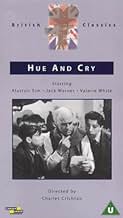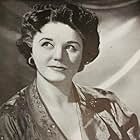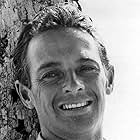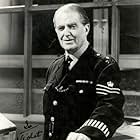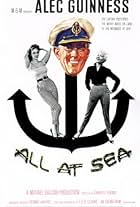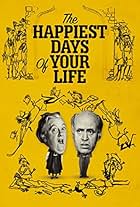Caution: Ending briefly described.
A young teenager and his pals discover that a gang leader is using a "boy's magazine" (called a comic, but seemingly more of a pulp-fiction text magazine) to tell his gang what jobs to pull. At the expense of logic, this allows for a nice scene at the beginning where a boy is reading a story and the events he's reading about are simultaneously happening around him. This is billed as a comedy, and there are many amusing scenes. Sim, in a small part, is delightful as the innocent, swishy, eccentric writer of the magazine stories. And there fine comic touches, such as, when they stop to look in a store window while trailing someone, the seamstress inside sticks out her tongue. But, unexpectedly, it's as a noir film that this shines. Many scenes are filmed on-location in war-torn London. At one point the kids descend into the sewers to avoid arrest, and when it seems that they can't get out, one becomes hysterical. The lobby of Sim's building is a complete noir set. The finale, with the boy entering darkness to follow the villain, and their cat-and-mouse fight on the open floors of a bombed building is noir in every aspect; the setting, the action, the lighting, the whole style of filming. The fight is violent, and ends with the boy jumping from the floor above onto the villain's stomach, killing him. It's a brutal death for a man whose crime is handling hot furs, and who the boy had no "personal" reason to kill. These noir aspects are the most striking part of the film, and it might have been even better if they had been even stronger. As it is, this Ealing film is still one of the best British films of the immediate post-war period.




